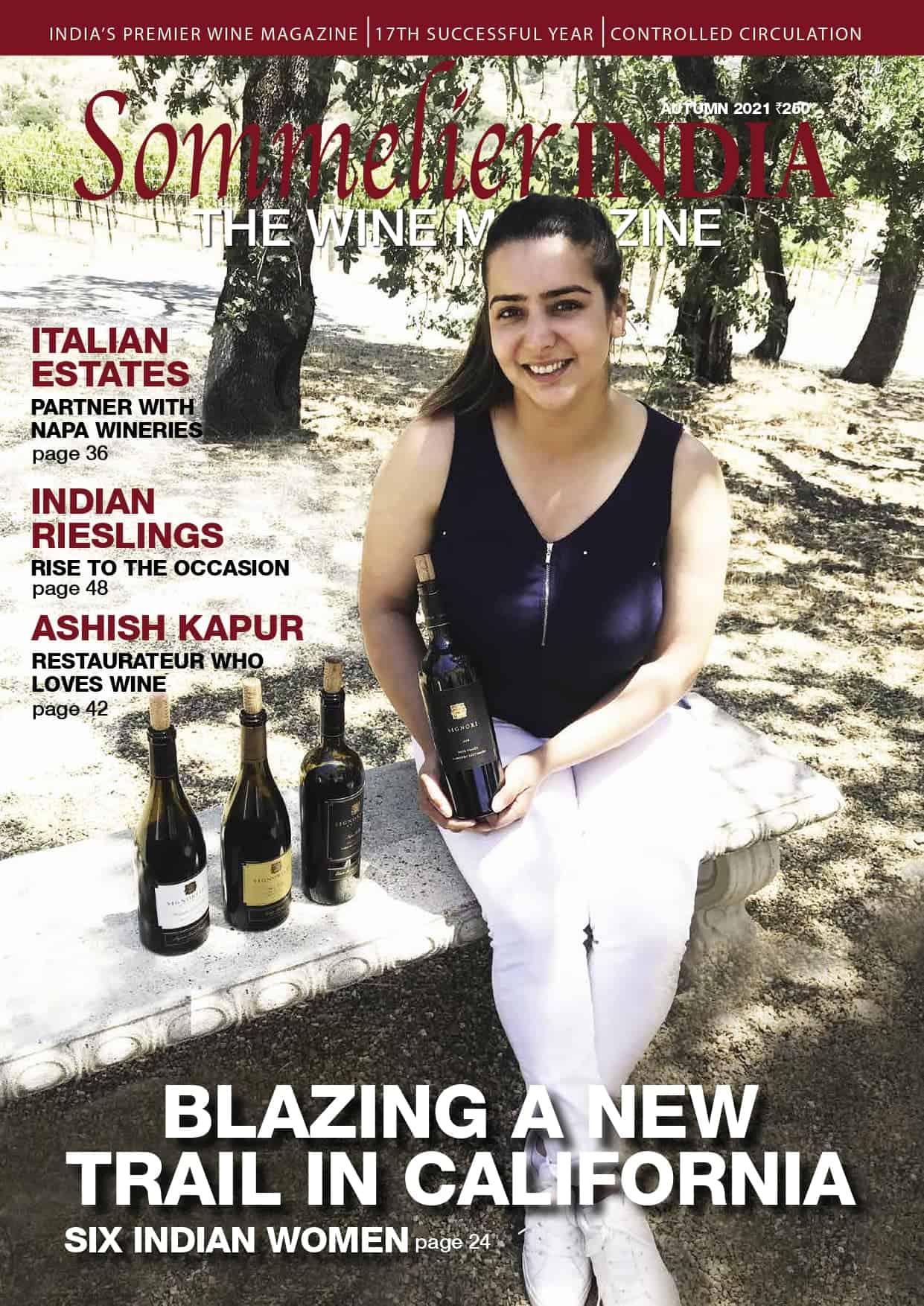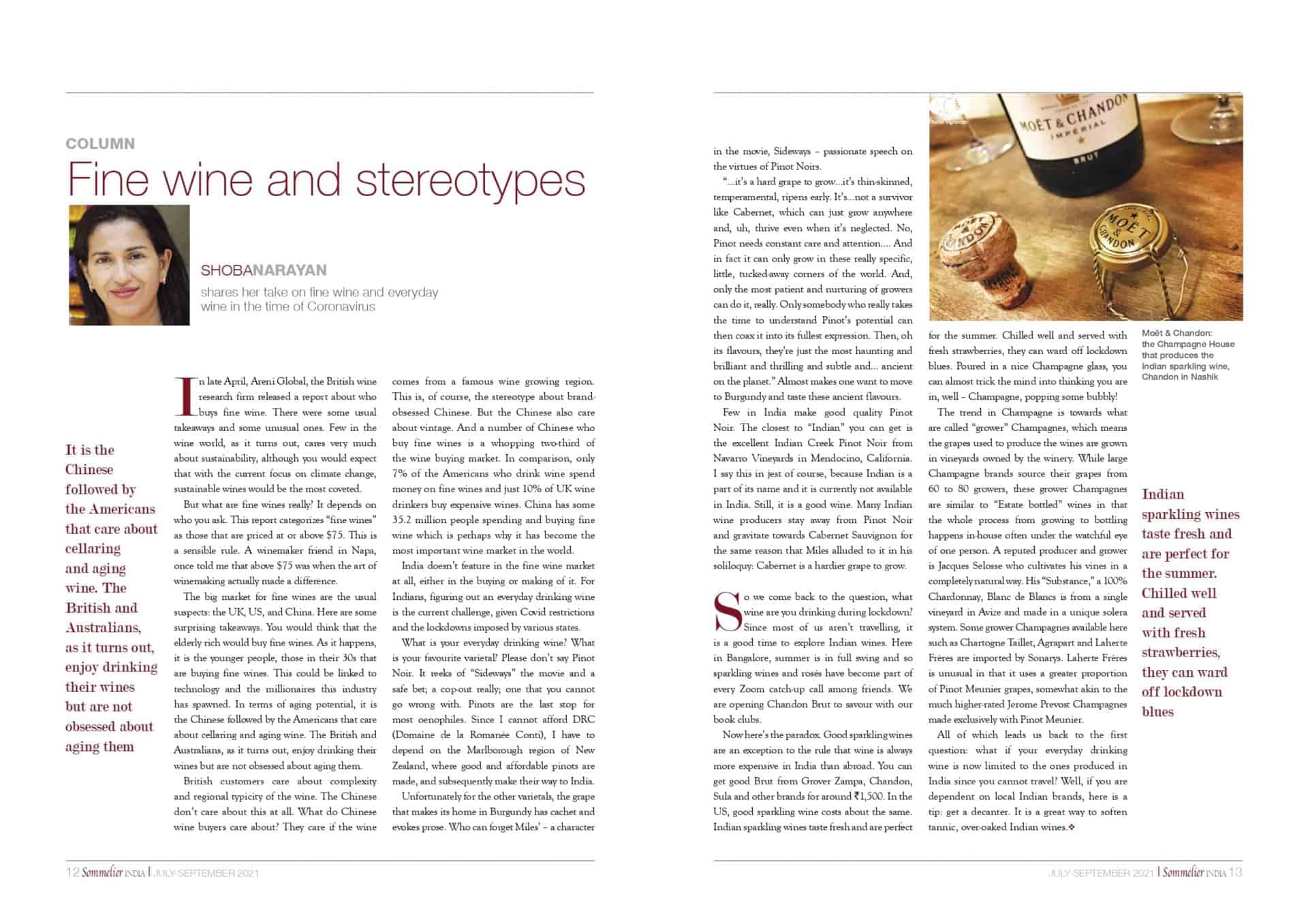Fine Wine and Stereotypes
In late April, Areni Global, the British wine research firm released a report about who buys fine wine. There were some usual takeaways and some unusual ones. Few in the wine world, as it turns out, cares very much about sustainability, although you would think that with the focus on climate change, sustainable wines would be the most coveted.
But what are fine wines really? It depends on who you ask. This report categorizes “fine wines“ as those that are priced at or above $75. This is a sensible rule. A winemaker friend in Napa, once told me that above $75 was when the art of winemaking actually made a difference.
The big market for fine wines are the usual suspects: the UK, US, and China. Here are some surprising takeaways. You would think that the elderly rich would buy fine wines. As it happens, it is the younger people, those in their 30s that are buying out fine wines. This could be linked to technology and the millionaires this industry has spawned. In terms of aging potential, it is the Chinese followed by the Americans that care about cellaring and aging wines. The British and Australians, as it turns out, enjoy drinking their wines but are not obsessed about aging it.
British customers care about complexity and regional typicity of the wine. The Chinese don’t care about this at all. What do Chinese wine buyers care about? They care if the wine comes from a famous wine growing region. This is, of course, the stereotype about brand-obssessed Chinese. But the Chinese also care about vintage. And a number of Chinese who buy fine wines is a whopping 2/3 of the wine buying market. In comparison, only 7% of the Americans who drink wine spend money on fine wines and 10% of UK wine drinkers buy expensive wines. China has some 35.2 million people spending and buying fine wine which is perhaps why it has become the most important wine market in the world.

India doesn’t feature in the fine wine market at all, either in the buying or making of it. For Indians, figuring out an everyday drinking wine is the current challenge, given Covid restrictions and the lockdowns imposed by various states.
What is your everyday drinking wine? What is your favorite varietal? Please don’t say pinot noir. It reeks of “Sideways” the movie, it is a safe bet; a cop out really; one that you cannot go wrong with. Pinots are the last stop for most oenophiles. Since I cannot afford DRC (Domaine de la Romanée Conti), I have to depend on the Marlborough region of New Zealand, where good and affordable pinots are made, and subsequently make their way to India.
Unfortunately for the other varietals, the grape that makes its home in Burgundy has cachet and evokes prose. Who can forget Miles’ (a character in Sideways) passionate speech on the virtues of Pinot Noirs. “…it’s a hard grape to grow…it’s thin-skinned, temperamental, ripens early. It’s…not a survivor like Cabernet, which can just grow anywhere and uh, thrive even when it’s neglected. No, Pinot needs constant care and attention…. And in fact it can only grow in these really specific, little, tucked-away corners of the world. And, and only the most patient and nurturing of growers can do it, really. Only somebody who really takes the time to understand Pinot’s potential can then coax it into its fullest expression. Then, I mean, oh its flavours, they’re just the most haunting and brilliant and thrilling and subtle and…ancient on the planet.” Makes one want to move to Burgundy and taste these ancient flavours.
Few in India make good quality Pinot Noir. The closest to Indian you can get is the excellent Indian Creek Pinot Noir from Navarro Vineyards in Mendocino, California. I say this in jest of course, because it merely has the name “Indian” in it and is currently not available in India. Still, it is a good wine. Many Indian wine brands stay away from pinot noir and gravitate towards Cabernet Sauvignon for the same reason that Miles alluded to in his soliloquy: it is a hardier grape to grow.
So we come back to the question: what wine are you drinking during lockdown? Since most of us aren’t travelling, it is a good time to explore Indian wines. Here in Bangalore, summer is in full swing and so sparkling wines and roses have become part of every Zoom catch-up call among friends. We are opening Chandon Brut to savour with our book clubs.
Now here is a paradox. Good sparkling wines are an exception to the rule that wine is always more expensive in India than abroad. You can get good Brut from Grovers, Chandon, Sula and other brands for around Rs. 1500. In the US, good sparkling wine costs about the same. Indian sparkling wines taste fresh and are perfect for the summer. Chilled well, and served with strawberries, they can ward off lockdown blues. Poured in a nice Champagne glass, you can almost trick the mind into thinking you are in, well, Champagne, popping some bubbly.
The trend in Champagne is towards what are called “grower” Champagnes, in which the person who grows the grapes makes the Champagne. This is indicated with an RM or Récoltant-Manipulant on the label. While large Champagne brands source their grapes from 60 to 80 growers, these grower Champagne are similar to “Estate” wines in that the whole thing from growing to bottling happens in-house often under the watchful eye of one person. A reputed one is Jacques Selosse who runs a biodynamic establishment. His “Substance,” prized at $423 is unique and worth the price if you can get it. Some other grower Champagnes such as Chartogne Taillet, Agrapart, and Laherte Freres are available at Sonarys. Laherte Freres is unusual in that it uses Pinot Meunier grapes, somewhat akin to the much higher-rated Jerome Prevost Champagnes made exclusively with Pinot Meunier.
All of which leads us back to the first question: what if your everyday drinking wine is now limited to the ones produced in India since you cannot travel? Well, if you are dependent on local Indian brands, here is a tip: get a decanter. It is a great way to soften raw over-oaked Indian wines to something drinkable.








Leave A Comment